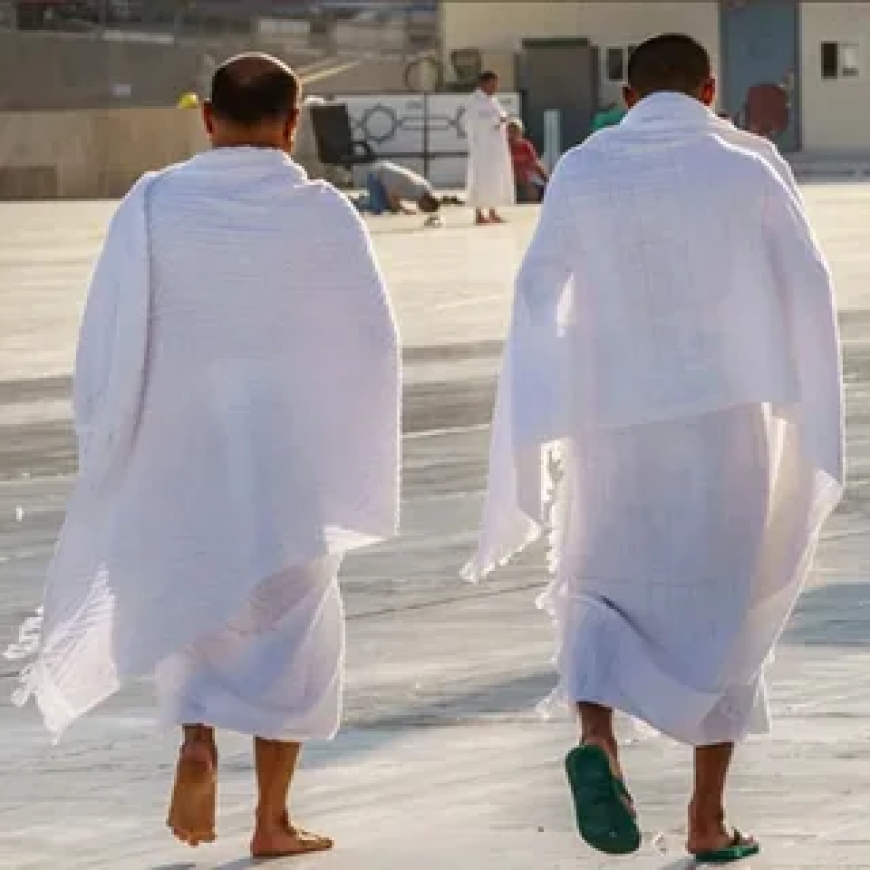Divine Drapes: The Sacred Journey of Ihram for Men in Umrah and Hajj

In the heart of every Muslim lies a yearning to fulfill one of the most profound obligations in IslamHajj and Umrah. These sacred pilgrimages represent more than a physical journey; they are a spiritual transformation. Central to this transformation is the wearing of Ihram for men for Umrah and Hajja state of spiritual sanctity and a symbolic dress code that signifies equality, humility, and devotion to Allah. For men, Ihram is not merely about white cloth; its a gateway to transcendence, humility, and submission.
Understanding Ihram: Not Just a Garment, But a State of Being
Ihram, derived from the Arabic root ?aruma, meaning to make forbidden, represents a sanctified state a pilgrim must enter before performing the rites of Umrah and Hajj. It is both a mental and physical condition that distinguishes ordinary life from sacred devotion. The moment a man dons his Ihram, he transitions into a state where certain acts become prohibited, and his focus shifts entirely toward pleasing Allah.
Ihram for men consists of two unstitched white sheets. One, known as the "Izar," is wrapped around the waist, while the other, the "Rida," is draped over the upper body. This simplistic dress code strips away worldly identitiesstatus, wealth, and fashionplacing all men on equal spiritual ground before Allah.
The Timing and Place: When and Where to Wear Ihram
Before setting out on the pilgrimage, men must declare their intention, or Niyyah, to enter into the state of Ihram. This is done at a designated station called Miqat. These Miqats vary depending on the region the pilgrim is traveling from, but all serve as the boundary beyond which a person must be in the state of Ihram before entering the sacred precincts of Makkah.
For Umrah, Ihram can be assumed at any time of the year, but for Hajj, it must be worn during the Hajj season (the Islamic month of Dhul-Hijjah). The moment one crosses the Miqat in Ihram, one steps into the divine fold of purity and spiritual discipline.
Preparation for Ihram: Cleansing the Body and Soul
The process of donning Ihram is preceded by a physical and spiritual cleansing. Men must take a full-body bath (Ghusl) or, if not possible, perform Wudu (ablution). Hair and nails may be trimmed beforehand, and perfumes or scented products should be avoided from that point on. This purification symbolizes shedding past sins and preparing the body to enter a sacred state.
Men are encouraged to wear sandals that do not cover the ankles, and undergarments are not permitted beneath the Ihram clothing. These instructions are not arbitrary but deeply rooted in the ethos of humility, detachment from materialism, and submission to the will of Allah.
The Rules and Prohibitions During the State of Ihram
Once in Ihram, several acts become prohibited, all aimed at maintaining spiritual sanctity. Men must refrain from cutting hair or nails, using perfume, engaging in sexual activity, hunting animals, getting married or proposing marriage, and arguing or fighting. Even minor disputes are discouraged as the focus is on maintaining a pure, calm, and devout mindset.
These restrictions serve as a reminder of the pilgrims commitment to spiritual discipline and the ultimate purpose of Hajj and Umrahobedience and devotion to Allah above all else.
Symbolism of the White Cloth: Equality and Humility
The white sheets of Ihram serve as a powerful symbol of equality and humility. When thousands, even millions of men wear identical garments, all worldly distinctionsrace, nationality, wealthfade into the background. In the sea of white, everyone is the same in the eyes of Allah.
It is a dress that mirrors the shroud used in Islamic burial, reminding pilgrims of the inevitability of death and the importance of accountability in the Hereafter. The simplicity of Ihram teaches the profound lesson that true honor lies not in appearance or status but in piety and righteousness.
Ihram and the Spiritual Mindset: Leaving the World Behind
Wearing Ihram is not just about conforming to a dress code; it is about transforming the mind and heart. It demands a deliberate shift in attitudea letting go of ego, anger, and distractions. The pilgrim is expected to maintain composure, show kindness, and engage in constant remembrance of Allah through Talbiyah, a chant that reinforces submission:
"Labbayk Allahumma Labbayk, Labbayka laa shareeka laka Labbayk."
("Here I am, O Allah, here I am. There is no partner to You, here I am.")
This verbal declaration echoes the pilgrims commitment to answer Allahs call. It becomes a meditative mantra that reinforces faith and detachment from worldly concerns.
Ihram in Practice: Navigating the Physical and Emotional Challenges
The physical act of wearing two pieces of cloth may seem simple, but it comes with practical challenges. The clothing must be adjusted carefully to avoid exposure, and the lack of stitching means that movements must be deliberate. Sleeping, walking, and performing acts of worship in Ihram requires patience and mindfulness.
Moreover, the heat of the Arabian sun, the dense crowds, and the rigorous rituals can be overwhelming. Yet, these hardships are part of the spiritual test. They serve as reminders of the sacrifices made by Prophet Ibrahim (AS), his family, and the many generations of pilgrims who have walked this path with sincerity and devotion.
Ihram in Umrah vs. Hajj: Similar Yet Distinct
While the state of Ihram is essential for both Umrah and Hajj, the timing and rituals differ slightly. In Umrah, the pilgrim enters Ihram, performs Tawaf (circumambulation around the Kaaba), Sai (walking between Safa and Marwah), and then exits Ihram after shaving or trimming the hair.
In Hajj, however, pilgrims may enter and exit the state of Ihram multiple times depending on the type of Hajj they perform (Tamattu, Qiran, or Ifrad). The period in Ihram is longer, and the rituals more extensive. Understanding these nuances helps ensure that every act is carried out correctly and sincerely.
Concluding the Journey: Shedding the Ihram, Retaining the Purity
After completing the rituals of Umrah or Hajj, men exit the state of Ihram by performing Tahalul, which involves shaving the head (preferred) or trimming the hair. This act symbolizes a renewal, a rebirth of sortsemerging from the pilgrimage with sins forgiven and hearts purified.
Yet, the true challenge lies not in the rituals themselves but in maintaining the spiritual purity and humility acquired during Ihram. The white cloth may be removed, but its lessons must remain stitched into the soul.
Conclusion: IhramThe Fabric of Faith and Unity
The Ihram for men in Umrah and Hajj is far more than two pieces of cloth. It is a profound symbol of unity, humility, discipline, and surrender. It serves as a powerful equalizer, eliminating distinctions and reminding every pilgrim that before Allah, all are equal, all are servants, all are seekers of mercy.
In donning the Ihram, men embrace a sacred identityone that mirrors the essence of Islam itself: submission, peace, and the pursuit of righteousness. It is a divine drape that not only covers the body but also unveils the souls longing for nearness to the Creator. Through every step taken in Ihram, the pilgrim walks closer not just to the Kaaba, but to the very heart of faith.
Related Posts
Minecraft Latest APK Softonic – Download and Play the B...
fwrt Jul 16, 2025 13
Minecraft Java Edition Free Download APK: What You Need...
fwrt Jul 15, 2025 24
computer fixing store near me
meliora Jul 13, 2025 4







































